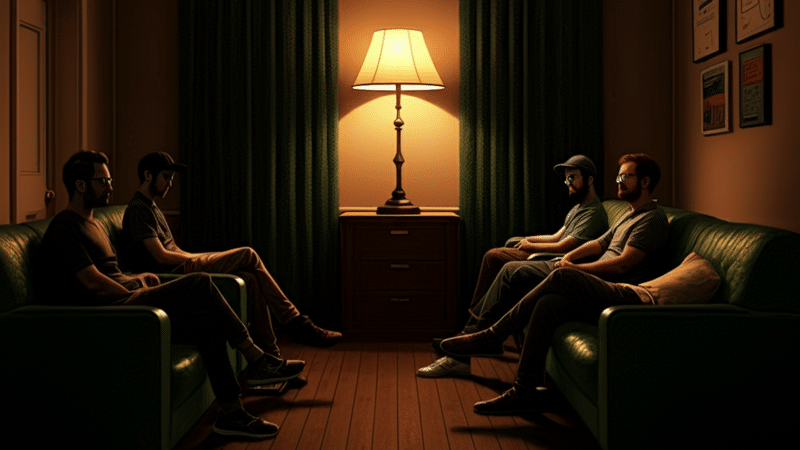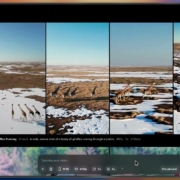Evaluating OpenAI’s Sora and other AI video generators

As AI video generators become increasingly accessible, creators are turning to tools like OpenAI’s Sora, InVideo, Canva’s Magic Studio, and others to speed up production and reduce costs.
But how do these platforms actually perform?
This article evaluates six leading AI video tools – based on real-world use, user feedback, and classroom experimentation – to uncover:
- What they do well.
- Where they fall short.
- How they fit into the future of content creation.
AI in action: Visualizing, iterating, and enhancing storytelling
Text-to-video models are revolutionizing the initial stages of production.
These advanced AI systems can generate complex scenes with remarkable detail, complete with:
- Multiple characters.
- Specific types of motion.
- Accurate renditions of both subject and background.
This capability dramatically reduces the time and resources traditionally spent on pre-visualization, storyboarding, and even initial animation.
Imagine the ability to rapidly iterate visual concepts, test different settings, and refine character interactions before a single frame is actually shot or rendered by a human team.
AI takes on the heavy lifting of execution, allowing human creators to dedicate their energy to what they do best:
- Conceptualizing.
- Innovating.
- Injecting that unique human perspective that transforms mere visuals into a memorable narrative.
Exploring popular AI video generators
When OpenAI’s Sora was finally released to the public on Dec. 9, 2024, it signaled a new chapter in AI-powered video creation.
Just a week later, Google responded with the launch of Veo 2 on Dec. 16, marking the start of an arms race among next-generation text-to-video platforms.
To explore these tools in a real-world setting, I invited students in my “Influencer Marketing and AI” classes – part of the Social Media Professional Program (SMPP) at the New Media Academy in Dubai – to put them to the test.
For their capstone projects, each student was asked to select one of six leading AI video generators:
- OpenAI’s Sora.
- Google’s Veo 2.
- Magic Studio by Canva.
- InVideo AI.
- VEED.
- Runway ML.
Their task?
Use the chosen platform to produce a short, persona-driven video – and then evaluate whether the tool actually helped them create quality content more efficiently or effectively.
With so many options now available in the ever-expanding AI toolkit, the goal was to move beyond hype and see how these tools perform in practice.
1. OpenAI’s Sora: Cinematic AI with striking realism
At the forefront of this brave new world is OpenAI’s Sora.
Its capabilities are truly astounding, enabling the generation of:
- Complex scenes featuring multiple characters.
- Specific types of motion.
- Incredibly accurate details in both subjects and backgrounds.
Imagine the potential for rapid prototyping of visual concepts, creating compelling storyboards, or even generating entire short-form videos from a simple script.
For a deeper dive into its functionalities, resources like “Getting started with Sora” offer valuable insights into generating high-quality videos up to 20 seconds while maintaining visual fidelity and adherence to prompts.
2. Canva’s Magic Studio: Quick and customizable video creation
Beyond the cutting-edge, a suite of user-friendly tools is democratizing video creation for teams of all sizes.
Canva’s Magic Studio stands out as a prime example, offering an intuitive collection of AI-powered features.
Teams can swiftly transform text into video, then:
- Refine the content with easy-to-use editing tools.
- Apply filters.
- Remove backgrounds with a single click.
The “Harness the Power of AI with Canva’s Magic Studio in your Business Workflows” tutorial is a fantastic starting point for understanding its streamlined workflow.
in your Business Workflows” tutorial is a fantastic starting point for understanding its streamlined workflow.
3. InVideo AI: Simple and efficient video production
For those seeking to produce professional-looking videos quickly without extensive prior experience, InVideo AI presents a compelling solution.
This platform combines pre-made templates with an AI-driven text-to-video feature, significantly accelerating the production process.
While its free plan includes watermarked videos and limited export options, it serves as an excellent entry point for experimentation.
To grasp its efficiency, watch “You Can Start These 8 Faceless Channels Even With $0.”
4. VEED: Fast, accessible video creation with smart AI tools
Similarly, VEED empowers users to create and polish videos with remarkable speed.
Its AI capabilities extend beyond basic generation. You can initiate an entire video from a single sentence describing your desired outcome.
Furthermore, its AI voice recognition can auto-generate subtitles and create transcriptions, significantly boosting accessibility and discoverability.
The video, “NEW: Auto-Generate Reels, Shorts, and TikToks with AI | CLIPS 2.0,” provides creators with some valuable, engaging, and informative content.
5. Runway ML: Experimental video generation with cutting-edge creative tools
For the more adventurous and creative, Runway ML offers a unique and powerful platform with a free plan that includes credits for its AI features, including video generation.
While its free tier has limitations, it’s an exceptional choice for experimenting with innovative AI video tools.
Watch “Introducing Runway Gen-4 | Runway” to learn more about their next-generation series of state-of-the-art AI models for media generation.
6. Google’s Veo: Ambitious AI filmmaking with room to grow
Not to be outdone, Google re-entered the AI video arena with Veo 2, which was rapidly followed by Veo 3.
Then, on May 20, 2025, Google introduced Flow, a new “AI filmmaking tool custom designed for Google DeepMind’s most advanced models – Veo, Imagen and Gemini.”
Watch “Introducing Flow | Google’s New AI Filmmaking Tool” to see a demonstration of the “new AI filmmaking tool built with creatives for the next wave of storytelling.”
Insights from hands-on use of text-to-video models
For their capstone assignment, I asked my students to choose among these six text-to-video models.
I also let them know about this article and invited them to share their thoughts on using AI video tools.
Amna Abdalla Alketbi, senior electrical projects engineer at Dubai Municipality, said:
- “Using the InVideo AI tool during the SMPP 20 program was an empowering experience. I created a persona-based video for ‘Fatma Al Suwadi,’ an Emirati fashion designer, and the tool provided incredible flexibility in shaping both the script and the visuals.”
- “It allowed me to bring a culturally rooted yet modern brand story to life – quickly and creatively – without needing advanced video editing skills. This hands-on experience showed me how AI can simplify content creation while still allowing for meaningful customization and storytelling.”
Donia Eldesouky, social media manager at the New Media Academy, who also used InVideo AI, said:
- “The AI video creation process was incredibly efficient, saving time, effort, and eliminating the need for traditional production steps like filming or voiceovers. However, the final output wasn’t perfect.”
- “(My marketing persona,) ‘Yasmina,’ was portrayed more like a human home assistant rather than an AI smart speaker, and the lack of an interactive dialogue weakened the original concept. I’d rate the result 7/10.”
- “It’s a promising tool for rapid prototyping, but not yet fully reliable for delivering nuanced, professional content.”
Other students, who wanted to remain anonymous, shared their comments about other AI video generators that they had used as well as their evaluations of whether the text-to-video model they had used had helped them to create high-quality content more efficiently or effectively.
Matt Baily, founder of SiteLogic and lead instructor at the New Media Academy, said:
- “Even though we’ve seen improvements, they only seem to be minor over the past year – but the core issues; bias, cultural bias, body parts, and repetitiveness are still the same.”
He also used Google’s Notebook LLM to generate the following summary of comments by students:
Tools used
- Several AI video tools were explored by multiple participants, including Sora, InVideo, and Veo.
- One participant reported using Nvidia AI.
- Another participant mentioned using Midjourney in the context of AI tools for analysis, although this tool is primarily for image generation.
Ease of use
- It was described as easy to create a video using AI.
- Creating a how-to video using AI was found to be easier than expected.
- The Veo tool was reported as fun to play with.
- Sora was found to be easy to use.
Outcome and quality
- AI engines were observed to be biased when generating visuals, emphasizing the need to monitor for bias.
- One tool produced output quickly but initially had no video output, only text and audio.
- Another video generated by Veo included a redundant emoji.
- The outcome from using Veo was described as not satisfying, with the participant expecting something better.
- AI did not use the script provided. Instead, it tried to manipulate it, which resulted in the user being unhappy with the outcome.
- An AI-generated video was rated as not good by one user, giving it a 7/10.
- One tool presented the concept of an AI assistant as a human assistant instead of a smart speaker.
- One user’s prompts didn’t effectively translate into the generated video, noting that the AI didn’t really get my ideas.
- It was stated that AI tools might help generate general ideas, but to generate the real scene, no, it wasn’t that easy. This was especially true for specific and sensitive subjects that are not widely used.
- An AI video created was described as quite funny.
- One participant felt their AI videos had a little bit more uncanny valley issues than some others seen, suggesting this might be due to the specific software used (Sora).
- It was noted that Sora needs a lot of work to make realistic videos appear realistic, and it had a lot of issues.
- Specific odd details observed in AI videos included a character walking backwards, a weird door, and strange walking movements. One comment speculated AI might make videos weird on purpose to encourage upgrading to premium versions.
- It was suggested that the graphic version of an AI video (using the same concept) looked more realistic than the one featuring human-like characters.
Time and effort saved
- It was astonishing to get a certain degree of content in no time, noting it didn’t take the expected longer time or more effort.
- Using InVideo AI was described as very fast.
- Using InVideo AI meant no filming, editing, or production crew needed.
Limitations and challenges
- A significant challenge faced was the lack of traditional clothes and culture in the AI databases or applications. While the music, place, and people were OK, traditional clothes were not represented.
- A fundamental limitation mentioned is that AI can never replace empathy and sympathy.
- AI is limited by existing data and can’t share different experiences that humans bring.
- AI capabilities are limited to executing predefined instructions.
- One tool was not able to capture everything from the text prompt, regardless of the amount of text provided.
- AI videos were noted to lack emotion and were described as not authentic.
- Some AI video outputs included repetitive content.
- The generated video did not accurately reflect what was intended in the text prompt.
- Difficulty was encountered when trying to prompt AI for something technologically advanced like a “smart mirror,” suggesting AI video is not yet equipped to handle such concepts.
- Sora was stated to need a lot of work, especially for realistic videos, having many issues.
- Bringing scenes together for a realistic AI video took a considerable amount of time (around one hour).
- It was highlighted that AI has issues, especially with heavy or serious topics, making it difficult to use for that kind of content.
Potential use cases and benefits
- AI can be utilized in an easy and fun way.
- AI video generators are described as powerful tools for producing stunning visuals quickly.
- AI tools may be helpful in generating general ideas for content.
- AI could potentially be used for a cover for a reel or something similar.
- AI is typically used for photos showing ups and downs (e.g., stock market trends).
- Sora offered rich suggestions that helped spark new ideas.
Personal preference and comparison to human creation
- Despite trying Sora, a participant stated they still enjoy creating things by myself more because it is more creative and better conveys their intended message.
- While AI can be used, the human touch is still required and is crucial for creating impactful videos.
- AI is viewed as a tool, like a high-tech camera, but not the photographer; it needs human direction, creativity, and vision.
- The human mind’s creativity is needed to provide the specific prompts for AI to generate desired results.
- One participant subjectively felt that the graphic style AI video was more realistic than the human-like character one.
Cost and access
- One participant reported that they didn’t have access to Sora or Runway.
- Trying Sora and InVideo AI revealed that both required buying a plan.
Navigating the transformative power of AI in video content creation
Participants found AI video tools like Sora, InVideo, and Veo to be generally fast and easy to use, though less effective for producing realistic or emotionally nuanced content.
While the models delivered impressive visuals and sped up production, users also noted key limitations:
- Lack of emotional depth.
- AI bias.
- Trouble with complex prompts.
- The need for human input to ensure originality and avoid repetition or uncanny results.
For marketers, creators, and businesses competing in a visually saturated digital space, these tools aren’t just helpful – they’re essential.
AI isn’t replacing human creativity; it’s expanding what’s possible.
By reducing production barriers and streamlining workflows, AI video generators are empowering storytellers to work faster and smarter.
In today’s content arms race, adopting these tools isn’t just an advantage – it’s a strategic necessity.


